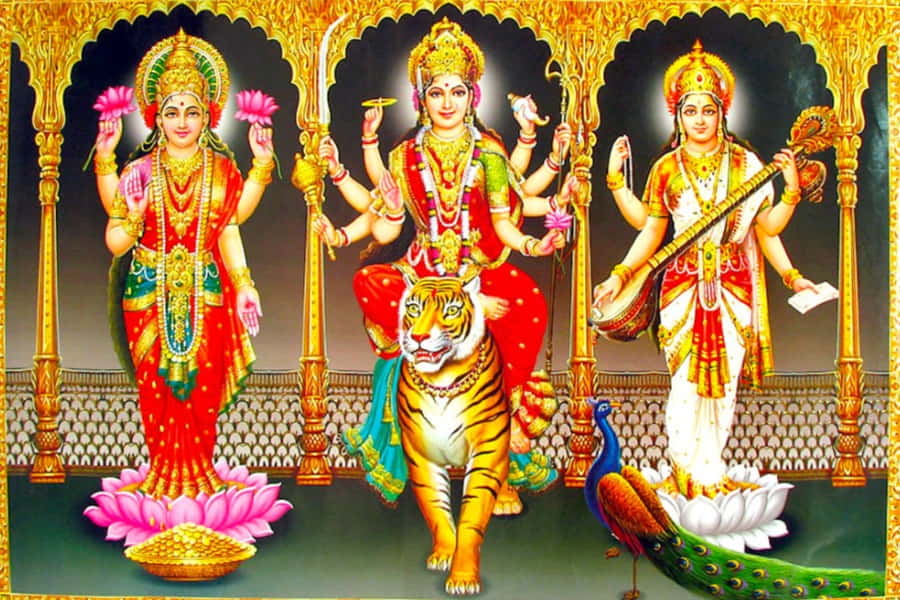Navaratri
Share this post
Navaratri
These nine days dedicated to Shakti, the Goddess, provide an opportunity to seek blessings and commune with their own divinity. It is a time for sacred gatherings, austerities, selfl ess acts and intimate prayers. But Navaratri is not just for the ladies; everyone turns out for the joyous worship, festivities, plays, feasting and dance-all venerating God as the loving Mother Spirit that gives life to everything.
Navaratri starts on the new moon of September/October. On the fi rst day, it is customary to plant seeds in a clay pot which will sprout over the next nine days. In some communities, women prepare a specially decorated kalasha, a vessel symbolizing the fertile womb, representing the Goddess. Especially in cities in Tamil Nadu, families create elaborate shelf displays, called kolu, of handmade clay dolls. Adding new dolls each year and handing the collection down to the next generation results in some grand displays.
Each night, the Goddess “holds court,” and special food offerings are presented as prayers eulogizing Her powers are chanted. Guests are invited to showcase their artistic skills, and all enjoy sweets and other treats. Women dress up and visit female friends and relatives, taking a tray of offerings which includes the betel leaf and nut that bear the gravity of a formal contract of friendship and loyalty. Other items on the tray-beauty accessories, fresh turmeric root and coconut-symbolize goodwill and fertility. They fast, pray morning and evening, and give food and cooking pots to the poor. Some families formally honor a prepubescent girl each day, giving her new clothes, treating her to a sumptuous lunch, and pampering her, affi rming her femininity and affi nity with the Goddess.
In South India the fi rst three days are dedicated to Goddess Durga, the fi erce Mother who decimates negative forces. For the next three days, Lakshmi, the Goddess of prosperity, is revered. The last three days are dedicated to Sarasvati, the Goddess of learning and wisdom. In this way, Hindus honor women as the protectors of the family, extol their powers of fertility and endurance, venerate them as the source of good fortune and revere them as repositories of culture and learning. In North India one of the nine aspects of Durga is venerated each day. These nine days are celebrated by communities in East India as Durga Puja, treating the Goddess as the Daughter who has come to her maternal home for an annual visit
Vijaya Dashami, “triumphant tenth day,” celebrates Durga’s legendary victory over Mahishasura, a powerful being fraught with ignorance and selfi shness. On the same day many celebrate Rama’s victory over the evil Ravana. The celebration is a reminder to persist in the challenges we face in life. Local traditions vary widely, and this day is known by other names, including Dussehra, Dasara and Dashain.
Books, musical instruments, equipment and tools are placed before Goddess Sarasvati for blessings, seeking Her gifts of talent, ability and inspiration. This rite, called Ayudha (weapon or tool) Puja, began when the kings of ancient India had their weapons blessed. Today any tool of one’s trade may be consecrated: craftsmen’s tools, books, offi ces, vehicles, computers, even iPhones! Devotees refl ect on their skills, strengths, goals and needs. A key rite of passage for children ages three to fi ve is performed on this day. Called vidyarambha, “beginning of learning,” it marks the start of a child’s formal education
Millions of Hindu women consider Navaratri the year’s central festival, the one they most deeply connect to.

Comments